NHL Contracts: Each team’s worst deal

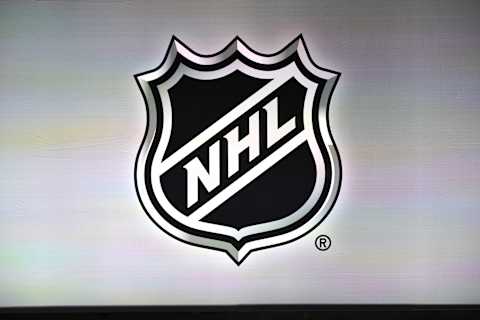
Which hockey players have the worst NHL contracts? Here’s a list of the worst contract on each team.
The NHL is one of the two major professional sports leagues with a hard salary cap. Because of this, it’s integral to not overpay players if you want to have success. This doesn’t mean a few bad NHL contracts can keep you from winning, but too many of them can complicate things.
Here’s why bad contracts are extremely painful for hockey teams. Every dollar counts. If you overpay someone by $1 million a season, that’s $1 million you can’t spend on someone else. Down the line, this might well cost you the chance to keep or add a player.
That said, it’s at least justifiable to overpay stars. You usually have to overpay to keep them anyway. It’s obviously not optimal to give someone more money than they deserve. But hey, if you do it for a star, you can at least point to them making a huge impact.
Bad contracts tend to turn ugly for several reasons. First of all, anytime you commit long-term to someone who is a role player, that’s usually not a good sign unless their average annual value is low. Lars Eller of the Washington Capitals is a terrific example of how to extend a role player. Sure, five years is questionable. But at under $4 million a year, Eller’s easily worth that.
Secondly, red flags should be blowing like they’re in a hurricane if a player over 30 years old gets a long-term deal. They rarely work out. It’s even worse if, as a fan, you have to say “well, at least he’ll probably still be good for the first [insert number] years of the deal”. That’s basically admitting you believe the deal will, at some point, be a hindrance to the team.
Thirdly, pretty much ANY deal signed on the first day of free agency is a bad one. It’s hard to find signings on the first day that could be considered a great value.
There are some examples of each of these throughout this list. For some teams, this exercise was easy. But for others, it was hard. Though whether that’s a good thing or a bad thing is up for debate. I only included active contracts as of July 2, 2018. So extensions signed since then do not count.
Without further ado, here is the worst contract on each team.
All contract information is from Cap Friendly.
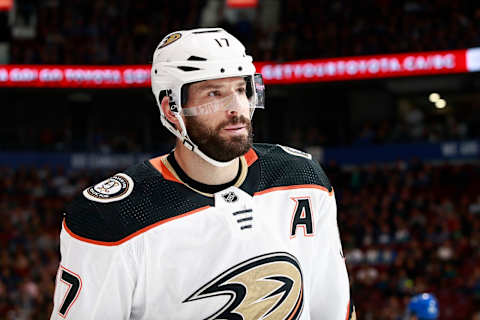
Anaheim Ducks: Ryan Kesler
Contract: Four years remaining, $6.875 million cap hit, $6.675 million annual salary, no movement clause until 2020-21, eight-team no-trade list in 2021-22.
This deal was horrible before the ink dried on his contract. Ryan Kesler signed his six-year extension with the Anaheim Ducks in 2015, just a month before he turned 31 years old. The six-year deal didn’t go into effect until he was 32 years old. This alone should have set off red flags.
Now, the Ducks thought Kesler would be good enough in his first three to four years of the deal to help them contend for a Stanley Cup. And, for the first year of his extension, he was pretty good, posting 58 points in 82 games while playing over 20 minutes a night. Kesler deservedly finished as a Selke Trophy finalist.
The six-year deal didn’t go into effect until he was 32 years old. This alone should have set off red flags.
Here’s the issue – it’s pretty obvious the Ducks were wrong by at least a year or two. It started when Kesler needed to have a surgery to get rid of bone fragments from his hip following the 2016-17 season. He was out until December 27th. When Kesler returned, it was painfully obvious he wasn’t the same player. Despite playing over 18 minutes per game, he put up just 14 points in 44 games.
Kesler is still being bothered by the issue and it might cost him the entire 2018-19 season. This seems like a good time to remind everyone he still has four years remaining on his deal. And keep in mind, the hip is pretty darn important to hockey players. If it’s not healthy, it shows.

Arizona Coyotes: Alex Goligoski
Contract: Three years remaining, $5.79 million average annual value, $15.9 million total salary remaining, no-movement clause, eight-team no-trade list, modified no-trade clause beginning in 2019
It was tough to pick one for the Arizona Coyotes because, well, they don’t have many players signed to long-term deals. While they absolutely overpaid for Oliver Ekman-Larsson, you don’t need to try hard to justify that extension. Plus, OEL is a star you can build around.
If the worst contract you have is one you had to sign to get a quality defenseman, that’s not the worst thing in the world.
Derek Stepan is slightly overpaid, but it’s not that bad. Also, you can pencil him in for 50 points a season. That’s pretty darn good.
The lone “bad” contract on the Coyotes belongs to defenseman Alex Goligoski. He’s
been asked to handle a lot of tough minutes. However, this doesn’t excuse his awful shot attempt numbers. To be fair, while Goligoski’s goals for percentage looks horrible, keep in mind the Coyotes struggled mightily early without Antti Raanta. With a far better goaltending situation going into next season, Goligoski’s goals for numbers should return to normal.
There is, however, a silver lining. Goligoski is still a solid defenseman. He looked much better as the season went on. In fact, Goligoski was one of their best defensemen after the start of February. If the worst contract you have is one you had to sign to get a quality defenseman, that’s not the worst thing in the world.
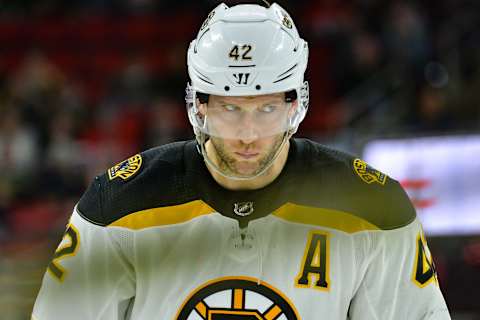
Boston Bruins: David Backes
Contract: Three years remaining, $6 million cap hit, $14 million total salary remaining, no-movement clause, no-trade clause (eight teams) starting in 2019-20, no-trade clause (15 teams) starting in 2020-21.
A lot of bad deals were signed on July 1, 2016. David Backes signed one of the worst. He got a five-year deal worth $30 million from the Boston Bruins despite being 32 years old. This made it a horrible, terrible, no good, very bad contract from the second it was signed.
Backes does many things well, but even in his prime, one thing he never had is speed.
To make matters worse, the Bruins like to play a fast game under head coach Bruce Cassidy. Backes does many things well, but even in his prime, one thing he never had is speed. To be fair, Claude Julien, who likes a heavy game, was the head coach when the Bruins signed Backes. That doesn’t make it defendable, however, because the NHL is shifting to a speed-based game.
Luckily, Riley Nash is the only guy Backes’ bad deal has directly cost the Bruins. However, he probably killed their chances of signing John Tavares, who would have made them immediate Stanley Cup contenders.
Honorable mention: David Krejci has a pretty awful deal as well. But at least he’s still a productive player. Krejci has significantly outproduced Backes and is still an average at worst skater. Jaroslav Halak got way too much term and money for someone who had as dreadful of a season as he did.
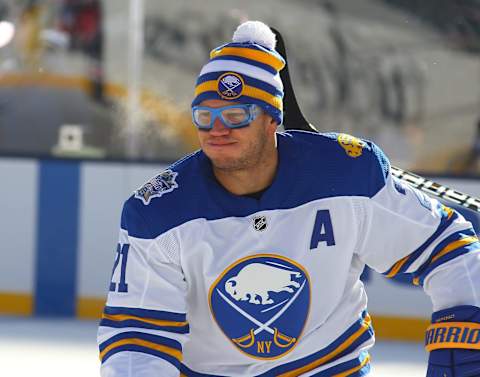
Buffalo Sabres: Kyle Okposo
Contract: Five years remaining, $6 million cap hit, $24 million total salary remaining, 15-team no-trade list.
The Buffalo Sabres signed forward Kyle Okposo to a massive seven-year deal worth $42 million in 2016. Seriously, the 2016 offseason is a great example of why overpaying for players on the first day of free agency is a really bad idea.
Now, to be fair, Okposo has been productive in Buffalo. He has two straight 40 point seasons in a Sabres jersey. Combined, Okposo has 34 goals and 89 points in Buffalo, which isn’t awful. But you’d expect more from someone who’s getting paid $6 million a year. And guess what? Okposo just turned 30 years old. Oh boy.
The 2016 offseason is a great example of why overpaying for players on the first day of free agency is a really bad idea
If this is the best the Sabres will get from Okposo, they’ll regret his long-term deal for a very long time. The worst part is his deal is next to impossible to buy out since $11 million of his remaining $24 million on his deal is a yearly signing bonus. Buyout proof deals like Okposo’s are probably going to be a huge part of the negotiations during the next lockout.
All of this said, part of his decline has been due to an unforeseen injury. Okposo suffered a serious injury towards the end of the 2016-17 season. That’s something the Sabres could not have known when they signed him. And it has played a substantial role in his decline since signing in Buffalo.
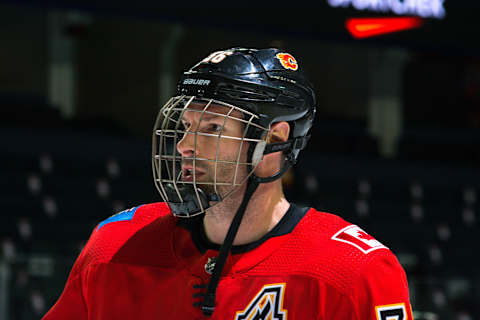
Calgary Flames: Troy Brouwer
Contract: Two years remaining, $4.5 million average annual value, $9 million total salary remaining, 15-team modified no-trade clause.
Back in 2016, the Calgary Flames were desperately looking to add to their right wing depth. It’s an issue that still plagues them to this day. But anyway, the Flames also wanted to add grit. Instead of just heading to Cracker Barrel and getting some tasty grits, they added it in the form of Troy Brouwer. He was coming of a very impressive postseason for the St. Louis Blues.
Calgary was hoping to get at least one or two good years out of Brouwer, but so far, they’ve gotten zero.
A good rule of thumb in free agency is “avoid overpaying someone for playoff performance”. The Flames broke this cardinal rule and are now suffering for it. Brouwer, not surprisingly, has not lived up to the expectations of his contract.
In 2015-16, he had 18 goals. Brouwer has 19 goals combined in his first two seasons in Calgary. He has also had the two lowest point totals in his career (25 in 2016-17 and 22 in 2017-18). Brouwer’s playing time has rightfully been reduced to just over 13 minutes per game.
Everybody but the Flames could have told you his deal was a really bad one from the moment it was signed. Calgary was hoping to get at least one or two good years out of Brouwer, but so far, they’ve gotten zero.
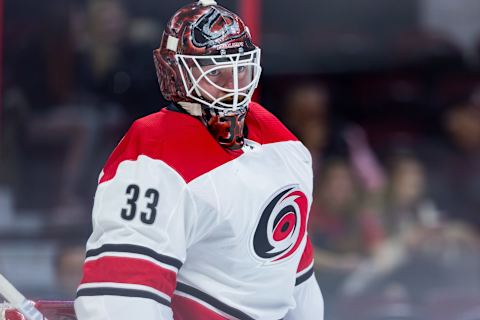
Carolina Hurricanes: Scott Darling
Contract: Three years remaining, $4.15 million average annual value, $11.85 million total salary remaining, 15-team modified no-trade clause.
The Carolina Hurricanes have been plagued by bad goaltending. They tried to solve this in 2017 by trading for Chicago Blackhawks goaltender Scott Darling. The Hurricanes proceeded to sign him to a four-year deal worth $4.15 million annually. At the time, it seemed like a good idea. Darling, after all, had been a stellar backup and earned his chance to be a starter.
If Mrazek outplays Darling, things could get very ugly in Carolina. Especially since the latter has a 15-team no-trade clause.
However, his time with the Hurricanes has been horrible, even though it’s been only a year. 42 goaltenders played in at least 30 games last season. Darling’s .888 save percentage ranked last among all qualified goalies. His 3.18 goals against average was in the bottom five among those netminders.
Now, to be fair, maybe Darling just took a while to adjust to being a starting goalie. Or maybe he wasn’t really ready for a starting role. At least Carolina is providing him with much better competition this season than Cam Ward.
Petr Mrazek, signed to a $1.5 million deal earlier this summer, could challenge him for the starting role. At least the Hurricanes are only committing $5.65 million to their goaltending, which isn’t that bad. Ideally, Mrazek and Darling will form a strong tandem. Neither goalie appears to be a true number one goaltender, so maybe having a 1a and 1b situation will work.
But if Mrazek outplays Darling, things could get very ugly in Carolina. Especially since the latter has a 15-team no-trade clause.
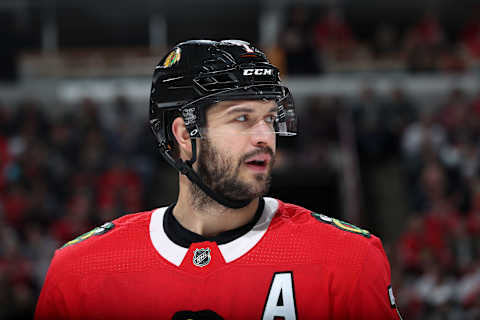
Chicago Blackhawks: Brent Seabrook
Contract: Six years remaining, $6.875 million average annual value, $37 million total salary remaining ($20 million signing bonus), no-movement clause through 2022, modified no-trade clause through 2024 (five-team in 2022-23, 10-team in 2023-24).
Stan Bowman has done a lot of great things for the Chicago Blackhawks. He’s a huge reason they’ve won three Stanley Cups in the 21st century. However, Bowman’s also made some very questionable deals over the past few seasons. None of them are worse than Brent Seabrook’s extension.
In September of 2015, he signed an eight-year extension worth $55 million with the Blackhawks. Once his deal went into effect in 2016, Seabrook’s play started to decline. But considering he was 31 years old at the time, this shouldn’t be surprising.
Seabrook is signed until he’s 39 years old. So unless something unforeseen happens (such as a sudden allergy to hockey equipment), the Blackhawks are stuck with him for the foreseeable future.
They can’t trade him or send him to the minors without his consent until after the 2021-22 season. Seabrook is due $9 million over the last two seasons, by the way. But if they trade him after July 1 of 2022, the other team will only be responsible for $5.5 million.
As I said earlier, if you have to start wondering “when can my team move this player’s deal?” before the ink is dry on the contract, that’s a great sign it’s a terrible contract.
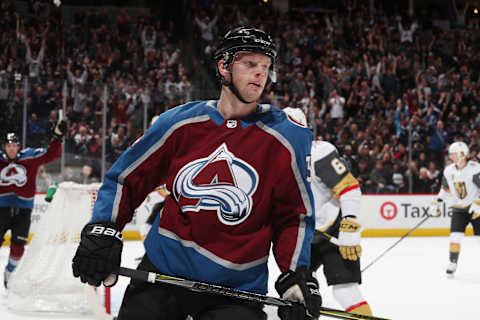
Colorado Avalanche: Carl Soderberg
Contract: Two years remaining, $4.75 million cap hit, $9 million total salary remaining, 10-team no-trade list.
The Colorado Avalanche are a lot like the Coyotes. They don’t really have many guys locked in long-term. The Avalanche have 12 players under contract after next season and just six after 2019-20. This leaves a very small number of players who are eligible for having the worst contract.
37 points in 77 games is far from horrible for someone making $4.75 million.
Most of the people who are signed long-term have extremely reasonable deals (or even bargain ones like Nathan MacKinnon). Carl Soderberg isn’t worth $4.75 million anymore, so he gets the nod for having the worst contract on the Avalanche.
He’s a third line forward at best for Colorado. That said, Soderberg at least has some hint of value remaining. He’s a quality penalty killer and is still a pretty decent skater. And 37 points in 77 games is far from horrible for someone making $4.75 million. Is it ideal? Probably not. But is it fine when you consider the other unbearably bad deals on this list? Sure.
The Avalanche are in pretty darn good shape. Of course, this could change if they sign guys to awful deals. But so far, general manager Joe Sakic has been pretty good at keeping guys at a reasonable price. He’ll certainly be tested in the next two years, however.

Columbus Blue Jackets: Brandon Dubinsky
Contract: Three years remaining, $5.85 million cap hit, $17.55 million total salary remaining, no-movement clause, 10-team no-trade list.
The Columbus Blue Jackets have an interesting roster. Only 13 of their players are signed to deals past the 2018-19 season. Of those 13, 11 of them belong to players who will be under 30 years old when the season starts. Nick Foligno and Brandon Dubinsky are the other two. The latter has the worse contract of the two.
There’s a long list of players who have been able to rebound after bad seasons. Most of them are faster and quicker than Dubinsky.
Dubinsky’s numbers have been declining for a while now. He put up 50 points during the 2013-14 season. Since then, Dubinsky has yet to repeat those numbers. After putting up 17 goals and 48 points in the 2015-16 season, there was some optimism. Maybe Dubinsky could still remain a productive player.
However, that has not been the case. In 2016-17, Dubinsky put up a respectable 41 points. Last season, he had arguably the worst season of his career, posting just 16 points in 62 games while playing 15:24 per game, his lowest since the 2007-08 season.
Dubinsky is on the wrong side of 30 years old at 31. Age typically hits forwards with a more physical playing style more harshly than players who rely on speed and skill. Dubinsky’s speed has never been that great. In order to improve, he’s going to have to adapt his game.
He will have to become a faster player, which is very hard to do when you weren’t that fast to begin with. There’s a long list of players who have been able to rebound after bad seasons. Most of them are faster and quicker than Dubinsky.
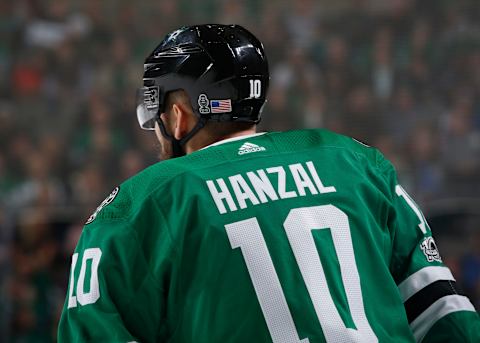
Dallas Stars: Martin Hanzal
Contract: Two years remaining, $4.75 million cap hit, $9 million total salary remaining, 15-team no-trade list.
Last offseason, the Dallas Stars decided to go all-in in trying to win a Stanley Cup. They had a hole in their lineup down the middle, so they signed center Martin Hanzal. At the time, it seemed like a reasonable deal. Especially since the Stars only made it a three-year deal.
Maybe if Hanzal can stay healthy, he can turn things around. But back problems tend to bother hockey players long-term and rarely go away completely.
However, it blew up in their face. And it’s easy to blame the Stars if you properly look back at the move in hindsight. At the time, Hanzal was one of the best centers available. And the Stars desperately needed a center. Though Hanzal had been relatively healthy in the previous two seasons, there should have been some red flags.
The same injury issues that plagued him earlier in his career came back. Hanzal played just 38 games in 2017-18, posting 10 points. Back in 2015, a back injury cost him to miss most of the season. The Stars were banking on Hanzal avoiding any further back problems. That wasn’t the case.
At least the contract is only for two more seasons. That’s about the only good thing that can be said for the deal right now. Maybe if Hanzal can stay healthy, he can turn things around. But back problems tend to bother hockey players long-term and rarely go away completely.

Detroit Red Wings: Oh Dear
So why didn’t I list a single player for the Detroit Red Wings? I’m afraid I have some bad news for Red Wings fans. It’s because I honestly couldn’t choose just one. There are so many bad deals on the Red Wings right now.
Let’s start with Justin Abdelkader, who had 35 points last season. He was the Red Wings ninth-most used forward at even strength last season (eight if you exclude Tomas Tatar, who got traded in February). Abdelkader makes $4.25 million and has five years remaining on his contract. Oh, and he’s 31 years old.
There are so many bad deals on the Red Wings right now.
Next, let’s discuss Darren Helm. He has three years remaining with a $3.85 million cap hit. Helm had 31 points last season. He’s a decent third-line center, but given that he isn’t a difference maker, he’s overpaid. Luke Glendening is up there as well, but at least he only has a $1.8 million cap hit, even if it is for the next three seasons.
And then there’s Frans Nielsen. Much like Kesler and Backes, his contract went into effect when he was 32 years old. Nielsen, like Backes, was signed in 2016. The Red Wings were convinced they could contend even without Pavel Datsyuk.
So they panicked and signed Nielsen. It hasn’t worked out at all. Nielsen still has four years left at $5.25 million per year and he has a 10-team no-trade list, along with a no-movement clause. Yikes.
Honorable Mentions: How did Danny DeKeyser get $5 million a season? Not only did Mike Green get paid too much, for some odd reason, the Red Wings gave him a full no-trade clause, though at least it turns into a 10-team no-trade list in February of 2020.
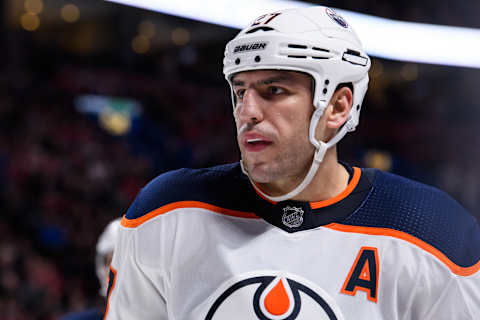
Edmonton Oilers: Milan Lucic
Milan Lucic signed a massive seven-year deal worth $42 million with the Edmonton Oilers back in (you guessed it!) 2016. Thus far, he has not come close to performing to expectations. Luckily, some impressive power-play production, along with playing a lot with Connor McDavid, hid his bad play. On paper, Lucic picked up 50 points. 26 of them, however, came on the man advantage.
Lucic isn’t fast and he isn’t that skilled. Today’s NHL is kind to those who are both. Lucic is neither.
The Oilers power-play was abysmal last season. So, naturally, Lucic’s production fell considerably to 34 points. He also saw his playing time cut noticeably, as his average time on ice per game fell from 17:10 in 2016-17 to 15:58 in 2017-18.
Lucic just turned 30, which is when forwards typically begin to decline. He doesn’t appear to possess the kind of skillset necessary to avoid Father Time, either. Lucic isn’t fast and he isn’t that skilled. Today’s NHL is kind to those who are both. Lucic is neither.
If you’re looking for a silver lining, at least he managed to increase his even strength production slightly from 25 points to 27 points. And to be fair, Lucic had a 6.8 percent shooting percentage in 2017-18. That’s the lowest of his career by a fairly wide margin. Lucic has a 13.7 career shooting percentage. While it’s fair to question if he’ll ever top that again, it’s hard to imagine him being converting on under seven percent of his shots again.
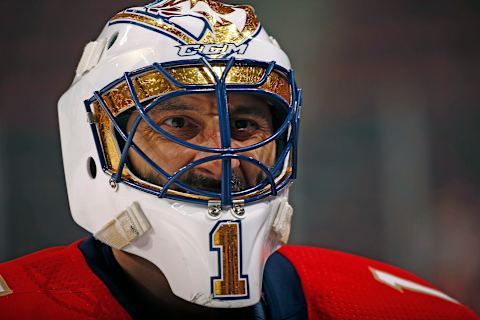
Florida Panthers: Roberto Luongo
Contract: Four years remaining, $4.53 million cap hit, $7 million total salary remaining, five-team no-trade list.
The Florida Panthers are in fairly good shape financially. Looking at their long-term outlook, they don’t really have any terrible contracts. Sure, there are some overpaid bottom six forwards like Jamie McGinn and Derek MacKenzie, but those deals are gone after the 2018-19 season. So Roberto Luongo’s deal is more like the “least good” contract on the team as opposed to the worst.
The obvious red flag with his deal is that he’s 39 years old and he still has four years remaining. However, Luongo’s contract is structured so the Panthers aren’t the ones who suffer if he retires. That would be the Vancouver Canucks who have to pay if he does.
One very good thing about the deal, though, is the salary remaining. Luongo is only due $7 million over the last four years. So even if he suffers a career-ending injury or starts rapidly declining (it’s a minor miracle that hasn’t started yet), the Panthers can easily trade him to a team like the Carolina Hurricanes or Arizona Coyotes who are looking to make the salary cap floor.
Aaron Ekblad’s contract could turn ugly quickly if his concussion issues come back to bite him long-term. But it appears he is over them, for the time being. Ekblad’s deal highlights why there’s risk in every single deal. Even the ones that seem really great, such as ones that lock up a talented young defenseman long-term.

Los Angeles Kings: Dustin Brown
Contract: Four years left, $5.85 million cap hit, $19 million total salary remaining, 23-team no-trade clause (eight teams he can be traded to).
The Los Angeles Kings have a number of options for worst contract on the team. This is mostly because they have a lot of long-term deals and tons of money committed to players over 30 years old. Even after factoring in a surprise rebound season from Dustin Brown, he gets the nod.
The chances of Brown playing out the rest of his deal in Los Angeles is much better than it was 365 days ago, but the Kings would still love to be done with his deal.
Anze Kopitar’s deal could get ugly in a few years, but for now, it’s perfectly fine. He’s a Hart Trophy candidate and one of the best two-way centers in the NHL.
Jonathan Quick’s deal could turn disastrous given how many miles are on his groin, but he’s been fairly durable. Drew Doughty’s contract is outrageous, so it gets an honorable mention.
Brown is 33 years old and turns 34 in November, so even after factoring in his bounce-back year, which featured a career high of 61 points, the rest of his deal is still pretty bleak. Keep in mind he had a combined 64 points in 2015-16 and 2016-17. So it’s not difficult to imagine Brown slipping back into his unproductive ways.
If he does, the contract is pretty difficult to get rid of. For one, Brown can only accept a trade to eight teams, which kills any leverage the Kings might have. That would also lessen any return they’d get for him. The chances of Brown playing out the rest of his deal in Los Angeles is much better than it was 365 days ago, but the Kings would still love to be done with his deal.

Minnesota Wild: Zach Parise
Contract: Seven years remaining, $7.538462 annual cap hit, $36 million total salary remaining, no-movement clause.
There were a lot of bad deals signed before the NHL mercifully put limits on how long a contract can be for. If you re-sign your own player, you can sign the player for eight years. However, if you sign the player in free agency, you can only give him seven. One has to think the shenanigans that led to the matching 13-year deals (!!!!) given to Ryan Suter and Zach Parise by the Minnesota Wild had something to do with this change.
Moving forward, the Wild have to be gravely concerned about his durability.
Perhaps it’s appropriate one of the last ludicrously lengthed contracts signed is arguably one of the league’s worst. Parise is a solid player when he’s healthy. With the Wild, he has 139 goals and 275 points in 375 games since joining them in the 2012 offseason. That’s good for a points per game rate of 0.74, which is good.
The issue is Parise has had problems staying healthy as of late. Aside from a critical injury in 2010-11, he proved to be very durable with the New Jersey Devils. In Minnesota, he has never played in all 82 games, something he did three times with the Devils (not including the three separate times he played in 81 games) in seven years.
Parise’s season high in games played with the Wild? 74. Last season, Parise only played in 42 games. Moving forward, the Wild have to be gravely concerned about his durability. At least Ryan Suter has remained a true top pairing defenseman and relatively healthy.
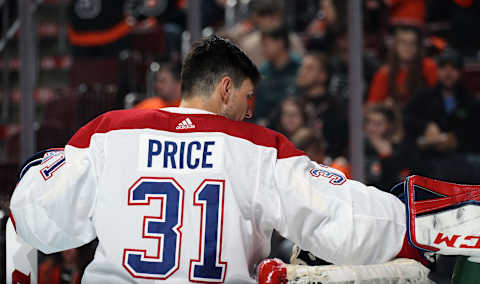
Montreal Canadiens: Carey Price
Contract: Eight years left, $10.5 million cap hit, $84 million total salary remaining ($70 million of it as a signing bonus), no-movement clause.
Last summer, the Montreal Canadiens locked up Carey Price to a record-setting deal for goaltenders. They had to pay a hefty price, making him the highest paid goaltender in the NHL. Admittedly, it was a risky decision. After all, Price is no stranger to injuries and he had just turned 30 years old.
Sure, there are goalies like Roberto Luongo and Henrik Lundqvist who laugh in the face of Father Time. But unlike them, Price has a pretty significant injury history.
But even the most pesimistic fan couldn’t have predicted what would happen next. Just a year after being named a Vezina Trophy finalist, Price was one of the worst goalies in the league. The 2017-18 season was the worst of his career.
At the age of 30, Price posted his lowest save percentage (.900) and had the highest GAA of his career (3.11). He narrowly avoided his first season without a shutout since 2009-10.
Price’s eight-year extension officially starts this season. That’s a lot to live up to for a goalie who just turned 31 years old. Sure, there are goalies like Roberto Luongo and Henrik Lundqvist who laugh in the face of Father Time. But unlike them, Price has a pretty significant injury history.
The worst part about the contract? It’s virtually impossible to buyout until after 2023-24 season. Even then, it would be very painful to do so and wouldn’t offer much salary cap relief. At least the next inevitable lockout will likely give teams some more compliance buyouts.
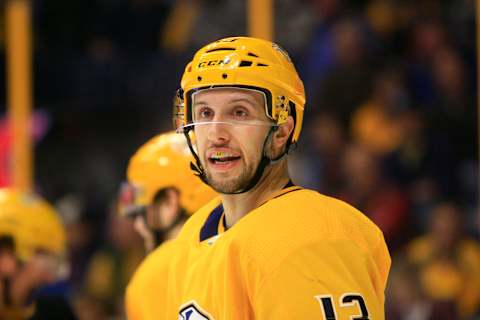
Nashville Predators: Nick Bonino
Contract: Three years left, $4.1 million cap hit, $12.3 million total salary remaining ($1.7 million of that is a signing bonus).
The Nashville Predators are notorious for locking up their core players early. It’s a risky strategy, but it has paid off beautifully for them. The Predators don’t have any horrible deals. P.K. Subban is admittedly overpaid, but he’s one of the best defensemen in the NHL and is a treasure off the ice. So you can easily justify his $9 million cap hit over the next four seasons.
It’s hard to judge a contract after one year. But so far, Bonino’s doesn’t look so good.
Of the guys they have signed, Nick Bonino has the least good contract. He has three years remaining at a $4.1 million cap hit. Which isn’t bad by any stretch of the imagination for a solid third-line center who the Predators signed in free agency.
In 72 games, while playing in primarily a defensive role, Bonino posted 25 points. Considering he started under 40 percent of his zone starts in the offensive zone, that’s pretty decent. Bonino had poor possession numbers, but he has a history of being better.
It’s hard to judge a contract after one year. But so far, Bonino’s doesn’t look so good. That said, the Predators have enough bargain deals that his contract is hardly prohibitive. It’s important to have bargain contracts in the NHL because they allow you to spend big if you need to. The Predators were able to do so with Kyle Turris, Nick Bonino, and Ryan Johansen.
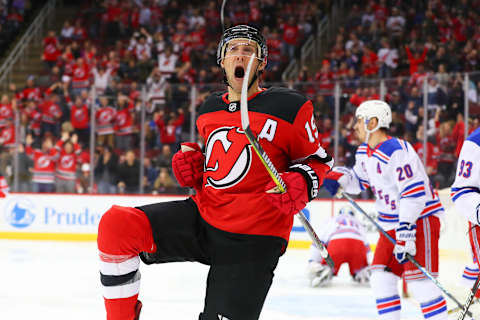
New Jersey Devils: Travis Zajac
Contract: Three years remaining, $5.75 million cap hit, $18 million total salary remaining, no-trade clause (precise details unknown).
The New Jersey Devils have a lot of younger players, which means most of their best players are still relatively cheap. This leaves very limited options for their worst contract. It boils down to either Andy Greene or Travis Zajac. The latter gets the nod for two primary reasons.
With the Devils’ younger forwards coming up, this will lead to less playing time for Zajac. Luckily, because they are young, they will be cheap.
First of all, Greene only has two years left on his deal with a $5 million cap hit. Meanwhile, Zajac has three years left and is more expensive. Secondly, Greene at least has some value in his intangibles. He’s the team captain and he helps mentor a very young defense. Zajac, while he serves as an alternate captain, is less effective.
Last season, he posted 26 points in 63 games. Zajac was a negative across the board in five-on-five CorsiFor percentage, scoring chances for percentage, goals for percentage, and shots for percentage. That said, it’s worth noting he was used pretty heavily defensively with a zone start percentage of under 40 percent.
With the Devils’ younger forwards coming up, this will lead to less playing time for Zajac. Luckily, because they are young, they will be cheap. So Zajac’s contract likely won’t prove to be prohibitive. But still, he’s not living up to his deal.
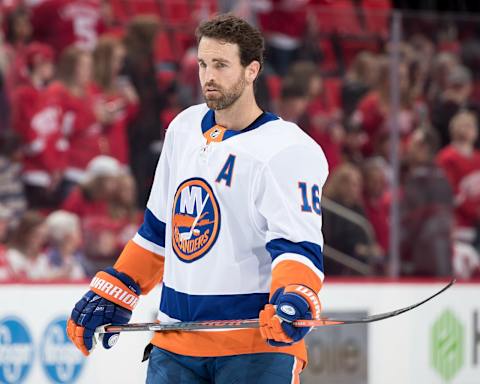
New York Islanders: Andrew Ladd
Contract: Five years remaining, $5.5 million cap hit, $23 million total salary remaining ($18 million of that is a signing bonus), no-movement clause through 2020-21, modified no-trade clause through 2022-23.
Back in 2016, the New York Islanders were desperate to add some talent to a roster that had just reached the second round for the first time in the John Tavares era. They decided to add a veteran forward in Andrew Ladd. The Islanders figured adding a two-time Stanley Cup champion would help take the franchise to the next level.
Perhaps a coaching change to Barry Trotz will help Ladd return to his dominant days. However, it’s far more likely fans have seen the best days from him.
It should come as no surprise the deal hasn’t worked out. The Islanders should have seen it coming. After all, Ladd went from 62 points in 2014-15 to 46 points in 2015-16. He’s fallen from 46 points to 31 points in 2016-17 to 29 points in 2017-18.
The Islanders haven’t made the Stanley Cup Playoffs with Ladd either. His 15 points in 44 pre-All-Star break games certainly didn’t help in 2016-17. And as scary as that might sound, Ladd didn’t even pick up 15 goals in 2017-18.
He turns 33 in December, which isn’t a good sign. Perhaps a coaching change to Barry Trotz will help Ladd return to his dominant days. However, it’s far more likely fans have seen the best days from him.
Honorable mentions: Johnny Boychuk, Cal Clutterbuck, Leo Komarov, Thomas Greiss.
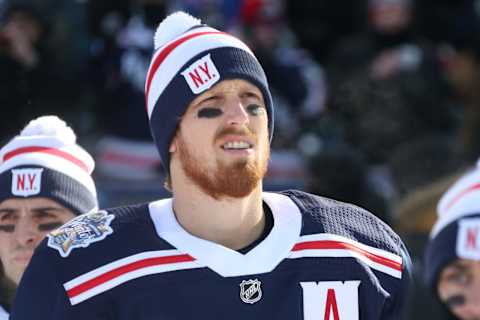
New York Rangers: Marc Staal
Contract: Three years remaining, $5.7 million cap hit, $12.2 million total salary remaining ($3 million of that is a signing bonus), no-movement clause.
The New York Rangers are undergoing a long overdue rebuild. They’ve purged a lot of their long-term deals from the team, including former captain Ryan McDonagh. The worst of their long-term deals belongs to defenseman Marc Staal. Goaltender Henrik Lundqvist was in the discussion as well, but he’s carried the team for so long, it’s easy to justify his contract.
Despite having a young, inexperienced defense last year, the Rangers didn’t even use Staal that much. Of the Blueshirts’ blueliners to get at least 650 minutes at five-on-five, only Brendan Smith averaged fewer five-on-five minutes per game than him.
Must Read: Top 10 Rangers Players of All-Time
Staal is a third-pairing defenseman who is getting paid like he’s at least a second-pairing defenseman. He’s 31 years old and is clearly on the decline. Moreover, Staal’s contract will be very difficult to move since he has a no-movement clause. He only put up eight points in 72 games last season, which is low even for him.
The Rangers made the wrong decision to keep him long-term. But unlike Dan Girardi, at least Staal is still somewhat serviceable as a third-pairing defenseman. His contact is also not too prohibitive considering the Rangers short-term outlook.

Ottawa Senators: Bobby Ryan
Contract: Four years left, $7.25 million cap hit, $30 million total salary remaining ($8 million of that is a signing bonus), no-movement clause, 10-team no-trade clause.
How bad is Ottawa Senators forward Bobby Ryan’s contract? It is keeping them from re-signing franchise defenseman Erik Karlsson. Signed in October of 2014, right before the start of his last season before free agency, the Senators have regretted signing Ryan ever since.
Signed in October of 2014, right before the start of his last season before free agency, the Senators have regretted signing Ryan ever since.
The first year of the deal (2015-16) was fine. Ryan posted 56 points, including 22 goals. In the next two seasons, he has combined to score 23 goals with 58 points. Ryan has also missed 20 games in each season, which should be a bit concerning for Ottawa moving forward.
In the first three years of the deal, he has had his first three seasons with a negative plus-minus rating. Ryan has, however, been decent in the Stanley Cup Playoffs for the Senators. In 2014-15, he had two goals in six games. Ryan, along with Erik Karlsson, nearly carried the Senators to the Stanley Cup Final in 2017, posting six goals and 15 points in 19 games.
However, any optimism about his future after the 2017 Stanley Cup Playoffs ended last season, when he posted just 33 points in 62 games. Ryan’s no-movement and no-trade clauses make it almost impossible for the Senators to get rid of him.
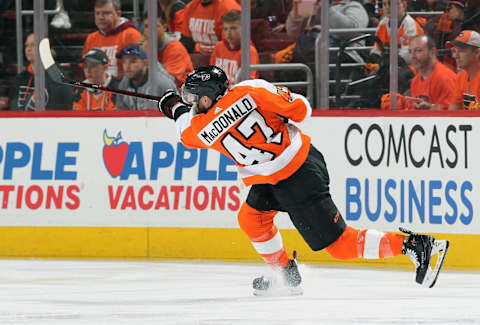
Philadelphia Flyers: Andrew MacDonald
Contract: Two years left, $5 million cap hit, $11.25 million total salary remaining.
The Philadelphia Flyers signed defenseman Andrew MacDonald to a six-year extension worth $30 million in 2014. This came after they acquired him at the trade deadline from the New York Islanders. Apparently, the Flyers liked what they saw from him.
MacDonald’s a good lesson for other teams. Don’t give long-term deals to guys whose best skill is hurling themselves in front of a hard, rubber object.
Not surprisingly, MacDonald hasn’t worked out too well for the Flyers. He only played in 86 games combined for them in his first two seasons. This was due to a combination of injuries and being sent down to the AHL. You know a non-entry level contract is bad when you get sent to the AHL in the first two years.
Under head coach Dave Hakstol, however, MacDonald has gotten more consistent playing time. Flyers fans aren’t happy about it either. He has been among their worst defensemen in each season he has been in Philly.
In 244 games with the Flyers, he has 11 goals and 63 points in 244 games. MacDonald’s a good lesson for other teams. Don’t give long-term deals to guys whose best skill is hurling themselves in front of a hard, rubber object. Luckily, the Flyers have a young, mobile defense, so MacDonald isn’t hurting them too much. But no matter what metrics you look at, he hasn’t been good for the Flyers.
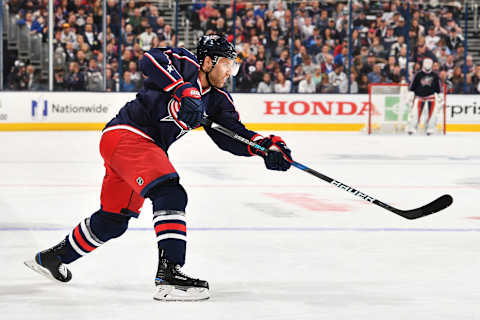
Pittsburgh Penguins: Jack Johnson
Contract: Five years left, $3.25 million cap hit, $16.25 million total salary remaining.
The player who has the Pittsburgh Penguins’ worst contract has yet to step up on the ice for them. Defenseman Jack Johnson got added to the roster on the first day of free agency. Despite seeing what happened with Brooks Orpik and the Washington Capitals, the Penguins found it necessary to give him a five-year deal.
Sure, Johnson was the third overall pick back in 2005. But at some point, you shouldn’t be defined not by your draft status, but by how you play.
Pittsburgh wanted to address their defense this offseason. It’s hard to argue Johnson is anything more than a third-pairing caliber defenseman at this point. Sure, Johnson was the third overall pick back in 2005. But at some point, you shouldn’t be defined not by your draft status, but by how you play. And Johnson has simply not been good for the Los Angeles Kings or Columbus Blue Jackets.
Luckily, it appears this deal is relatively easy to get rid of. Someone will take on the deal, whether it be a team like the Arizona Coyotes or possibly even Seattle’s NHL team during the next expansion draft. But that doesn’t justify signing a third-pairing defenseman like Johnson to a five-year deal.
The Penguins have made some smart moves over the years. It’s pretty telling that their worst contract belongs to someone who hasn’t even played for them yet.
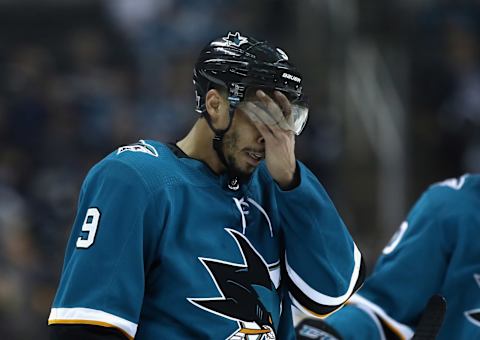
San Jose Sharks: Evander Kane
Contract: Seven years left, $7 million cap hit, $49 million total salary remaining ($12 million of that is a signing bonus), 28-team no-trade list (can only accept a trade to three teams).
The San Jose Sharks, much like the Penguins, signed their worst contract this offseason. After acquiring forward Evander Kane from the Buffalo Sabres, he did very well for them. In 26 games combined between the regular season and postseason, Kane posted 19 points.
That was enough for the Sharks to re-sign him long-term. $7 million a year for seven years is a lot to commit to someone who has only scored 30 goals once. And that was back in 2011-12. However, it is worth noting Kane scored 28 goals in 2016-17 and 29 in 2017-18. So at least he came very close to 30 goals.
Related Story: Ranking Each Team's Head Coach
Kane is coming off three consecutive seasons with at least 20 goals. He’s a pretty reliable goal scorer when he’s on the ice. There’s just one problem – Kane has had trouble staying on the ice. He has only played in at least 70 games four times in nine seasons.
That’s not all. Kane has also had trouble avoiding getting into trouble off the ice. He’s been involved in numerous off the ice incidents. It makes you wonder why the Winnipeg Jets were so eager to get rid of him. It’s understandable why the Sabres did – he was a pending free agent and they had to get something for him. But why did the Jets?
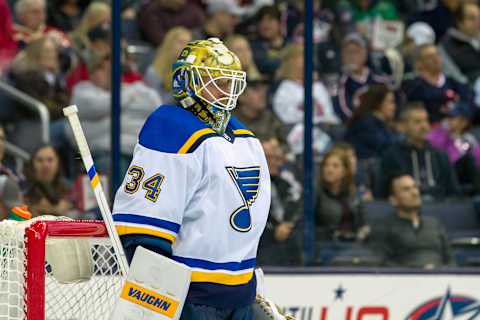
St. Louis Blues: Jake Allen
Contract: Three years left, $4.35 million cap hit, $13.55 million total salary remaining.
The St. Louis Blues are in pretty good shape as far as their contracts. They have a few huge contracts, but they belong to the right guys. Vladimir Tarasenko and Ryan O’Reilly are paid appropriately. You could argue Tyler Bozak is overpaid, but $5 million a year over three years isn’t that bad. So the Blues worst contract belongs to none other than goaltender Jake Allen.
The issue with him is they’re paying him $4.35 million a year to be their starting goaltender. Allen hasn’t done nearly enough to prove he should actually be a starting goalie. He was great in 2015-16, posting a .920 save percentage in 47 appearances (44 starts).
Related Story: 5 Players Who'd Love A Mulligan On The 2018 Season
However, since then, Allen has been trending the wrong way – downwards. He posted a .915 save percentage in 60 games in 2016-17. Last season, Allen had his worst full season as a professional with a .906 save percentage. That was his lowest since his rookie season (2012-13), during which he only appeared in 15 games.
Allen’s deal isn’t horrible for a goaltender. But he’s been a significant issue for the Blues as of late. St. Louis paid him to be their long-term starter and he was outperformed significantly by Carter Hutton last season.
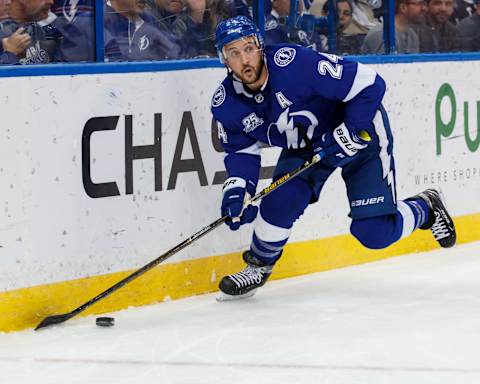
Tampa Bay Lightning: Ryan Callahan
Contract: Two years left, $5.8 million cap hit, $9.4 million total salary remaining, no-movement clause, modified no-trade clause (16 team trade list).
General Manager Steve Yzerman has made many brilliant moves for the Tampa Bay Lightning. However, one horrible move sticks out when you look at their roster. Back in 2014, the Lightning traded forward Martin St. Louis to the New York Rangers for Ryan Callahan and two first-round picks.
After posting 11 points in 20 regular season games and zero points in four postseason games, the Lightning signed him to a massive extension. The first year went great. In fact, Callahan had 54 points, tied for his career high. He added eight points in 25 Stanley Cup Playoff games as Tampa Bay made it to the Stanley Cup Final.
Related Story: Top 10 Number One Picks In NHL History
It’s been all downhill since then. Callahan has merely 50 points in 158 regular season games since the Lightning lost to the Chicago Blackhawks in the 2015 Stanley Cup Final. And it’s not like he’s producing in the postseason either. Callahan has seven points in his last 31 Stanley Cup Playoffs games.
His contract is awful. In fact, it’s probably the top reason why the Lightning haven’t traded for Erik Karlsson yet. If Tampa Bay wants to acquire the two-time Norris Trophy winner, they’ll probably have to bite the bullet and trade Callahan (along with a high draft pick or a top prospect) somewhere.

Toronto Maple Leafs: Nikita Zaitsev
Contract: Six years left, $4.5 million cap hit, $27 million total salary remaining ($10 million of that is a signing bonus), 10-team no-trade list starting in 2019-20.
The Toronto Maple Leafs used to have a ton of bad contracts. But now, the Leafs are nearly completely void of them. We won’t count Nathan Horton’s because he’s just hanging out on the long-term injured reserve list.
One day, John Tavares’s deal (seven years, $11 million per year) is going to look bad. Especially since almost all of his money due is a signing bonus. But that’s likely not going to be for a while. For now, Tavares’s contract should help the Leafs contend for the foreseeable future.
Defenseman Nikita Zaitsev’s deal isn’t horrible, but it’s the worst on the Maple Leafs by a good margin. Nazim Kadri, Morgan Rielly, Frederik Andersen, and Tavares each have long-term deals as well. William Nylander, Auston Matthews, and Mitch Marner will be added to this list in the very near future.
Related Story: Maple Leafs All-Time Dream Team
But here’s the thing. Those guys I mentioned are worth every penny of what they’re getting paid. They’re great players. I’d wager each of them is among the top 200 players in the league. However, the same can’t be said for Zaitsev.
His possession numbers are alarmingly bad. That said, $4.5 million is somewhat reasonable for someone like Zaitsev. Head coach Mike Babcock loves him and he’s one of the Maple Leafs’ most used defensemen during penalty kills. Thanks to Roman Polak’s departure, he’ll probably be even more used.
Zaitsev needs to be put with a defenseman who is better defensively. He seems confident with the puck, but he defers a bit too often to guys like Jake Gardiner and Morgan Rielly. Ideally, Zaitsev should be with someone like Ron Hainsey or Martin Marincin.
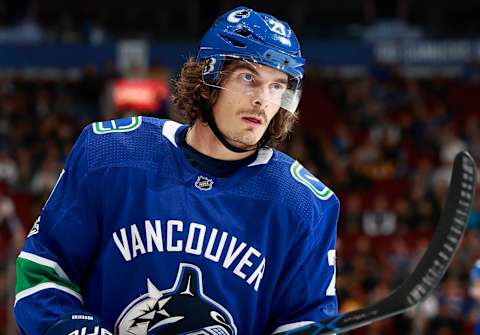
Vancouver Canucks: Loui Eriksson
Contract: Four years left, $6 million cap hit, $20 million total salary remaining ($14 million of it is a signing bonus), full no-trade clause through 2020-21, 15-team no-trade clause from 2020-21 to 2021-22.
It says something when you break every cardinal rule regarding overpaying players by signing Jay Beagle for four years, making half of his total salary ($12 million) a signing bonus, and giving him a no-trade clause and it’s still not the worst deal on your team.
For the Vancouver Canucks, that distinction belongs to forward Loui Eriksson. He’s yet another guy who signed back in the infamous 2016 offseason. Eriksson was probably the best bet to have success. After all, he was coming off a solid season with the Boston Bruins and was joining the same team who had the Sedin twins, who Eriksson had massive experience with on Sweden’s national team.
Related Story: Redrafting the 2003 NHL Draft
That hasn’t been the case. Eriksson has just 47 points in 115 games with the Canucks. To give that some context, his previous career low before coming to Vancouver in a season with at least 70 games played was 47 points (2014-15).
Eriksson’s deal is going to be extremely hard to get rid of thanks to his signing bonus. Players are guaranteed that even if their deal is bought out. May Eriksson’s deal be a lesson to those general managers who are in denial about rebuilding. It’s better to be safe than sorry, which is precisely what the Canucks are right now.

Vegas Golden Knights: Tomas Tatar
Contract: Three years left, $5.3 million cap hit, $15.2 million total salary remaining ($1 million of that is a signing bonus), full no-trade clause until Feb. 2, 2020, 15-team no-trade clause from Feb. 2, 2020 to end of 2020-21 season.
The Vegas Golden Knights don’t really have any horrible deals. Most of their long-term deals (namely Reilly Smith and Jonathan Marchessault) are very good. We’ll ignore David Clarkson since he’s getting an extended paid vacation on Robidas Island.
Marc-Andre Fleury’s new deal, which starts after the 2018-19 season, is pretty bad. That said, he has a ton of value to the Golden Knights off the ice and is their face of the franchise. Plus, it isn’t his active contract.
Related Story: 1980's NHL All-Decade Team
This leaves Tomas Tatar with the worst deal. He didn’t have a good start with the Golden Knights, often finding himself a healthy scratch after being acquired at the trade deadline. That said, judging someone solely based on a 28 game sample size isn’t smart.
Tatar’s track record says he’s much better than a guy who’s going to give you eight points in 28 games. He’ll likely replace David Perron on the second forward line. Because the Knights were competitive, Tatar wasn’t given much time to get used to his new team or linemates. That’s something he’ll likely get in 2018-19.
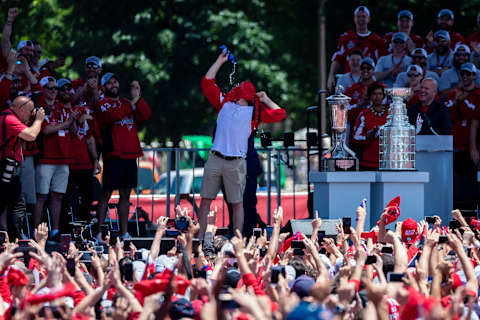
Washington Capitals: T.J. Oshie
Tom Wilson’s deal has not been signed yet, so this might get updated if the Washington Capitals don’t do a good job there. But this was honestly a hard one to do. Alex Ovechkin has several years left on his deal with a cap hit close to $10 million. But until the generational goal scorer proves he’s no longer a generational goal scorer, he’s worth more than what he’s getting paid.
Lots of people were angry at Evgeny Kuznetsov’s contract last summer, but he went and had an impressive regular season. He also cemented his legacy with an unforgettable Stanley Cup run. Hopefully, there’s a statue of Kuznetsov doing his bird celebration in the near future.
This leaves T.J. Oshie. Let’s make this clear – he’s a darn good player. Even when Oshie isn’t putting up points, his overall game is great. He hounds puck carriers on defense and can play on both ends of special teams. All things considered, his cap hit is pretty darn reasonable.
Related Story: 1970's All-Decade NHL Team
That said, he still has a lot of years left on his deal. And, unfortunately, Oshie has durability issues. Thanks to several concussions, he has missed time in each of the past three seasons. All of this said, does anyone really care about Oshie’s contract when he played such a huge role in the franchise’s first Stanley Cup? Probably not.
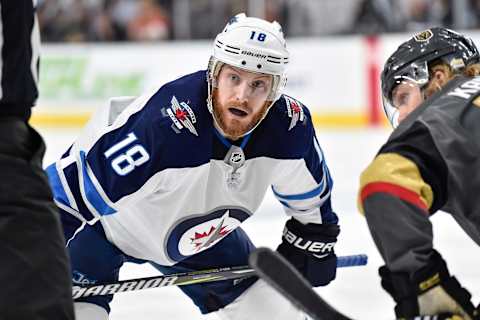
Winnipeg Jets: Bryan Little
Contract: Six years left, $5.921 cap hit, $31.75 million total salary remaining, no-movement clause for the first two seasons, modified no-trade clause (14-team no-trade list) for the last five.
Here’s another team who didn’t really have many options. Mark Scheifele’s long-term deal is highway robbery. Nikolaj Ehlers is quickly rising as a young star and should prove to be a huge bargain. Remarkably, defenseman Dustin Byfuglien has avoided regression, so his deal is good for now.
This leaves Bryan Little as the odd man out. Back in September of 2017, the Winnipeg Jets signed him to a six-year extension. Neither side wanted to go through free agency, so they agreed to a deal that would keep him in Winnipeg long-term.
Little has been pretty darn consistent, posting at least 40 points in his last seven full seasons (excluding the 2012-13 lockout-shortened season). And that’s while not always staying healthy. There’s a lot of value in being able to pencil someone in for at least 40 points a year.
Next: Greatest Player To Wear Each Jersey Number
Long-term, there are some concerns about Little. First of all, he has struggled to stay on the ice as of late. Little has only played in 82 games in a season twice (2013-14 and 2017-18). In 2015-16 and 2016-17, he combined to play in merely 116 games. Little’s health is going to determine how his deal is viewed long-term. But by default, he has the worst contract on the Jets right now.
If the worst contract on your team belongs to someone who is a consistently productive player, that’s a pretty good sign your team is in good shape.